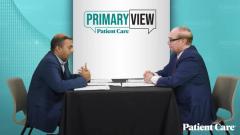
Identifying CKD: Screening and Guideline Implementation
Robert Busch, MD, discusses common screening methods to detect chronic kidney disease (CKD) and how he utilizes the Kidney Disease: Improving Global Outcomes (KDIGO) guidelines in his practice.
Episodes in this series

Transcript
Dhiren Patel, PharmD: I think you brought up a couple of good points there in terms of testing for both eGFR [estimated glomerular filtration rate] and uACR [urine albumin-creatinine ratio]. Maybe you could talk to us a little bit about what you do, but then also what you see. I think those are 2 different things. So when it comes to staging, what should we be doing vs what do you see sometimes in your patients who are coming in? Do you see both? And then if you could tie that together with the Kidney Disease: Improving Global Outcomes (KDIGO) guidelines….
Robert Busch, MD: Since early kidney disease is silent, patients don’t know they have it…, even though they’ve been under primary care or other guidance for many years. So I have in the exam room the KDIGO heat map, which is a heat map showing who’s more likely to go on to end-stage kidney disease. If your GFR is fine, over 90, and your urine microalbumin is under 30, you’re in the good zone. But anything beyond that with your GFR lower than 90 or your urine microalbumin higher than 30, you have some early kidney disease. It’s important to identify those patients to counsel them so they don’t go on beyond that. And up until the last 5 to 8 years, everyone just got an ACE [angiotensin-converting enzyme inhibitor] or an ARB [angiotensin receptor blocker] and then you were done. That’s the most you could do. You didn’t have another drug therapy that you could do to prevent kidney disease or testing that you could do other than the urine microalbumin and GFR. But now we have other testing and meds to benefit the kidneys.
Transcript was AI-generated and edited for clarity.
Newsletter
Enhance your clinical practice with the Patient Care newsletter, offering the latest evidence-based guidelines, diagnostic insights, and treatment strategies for primary care physicians.



























































































































































































































































































